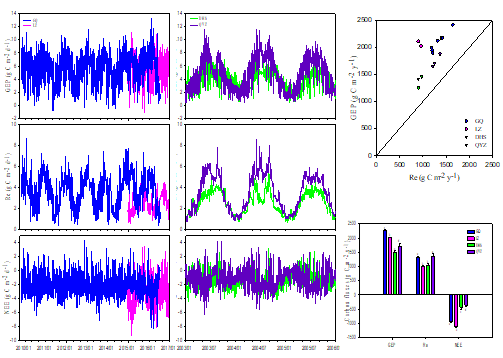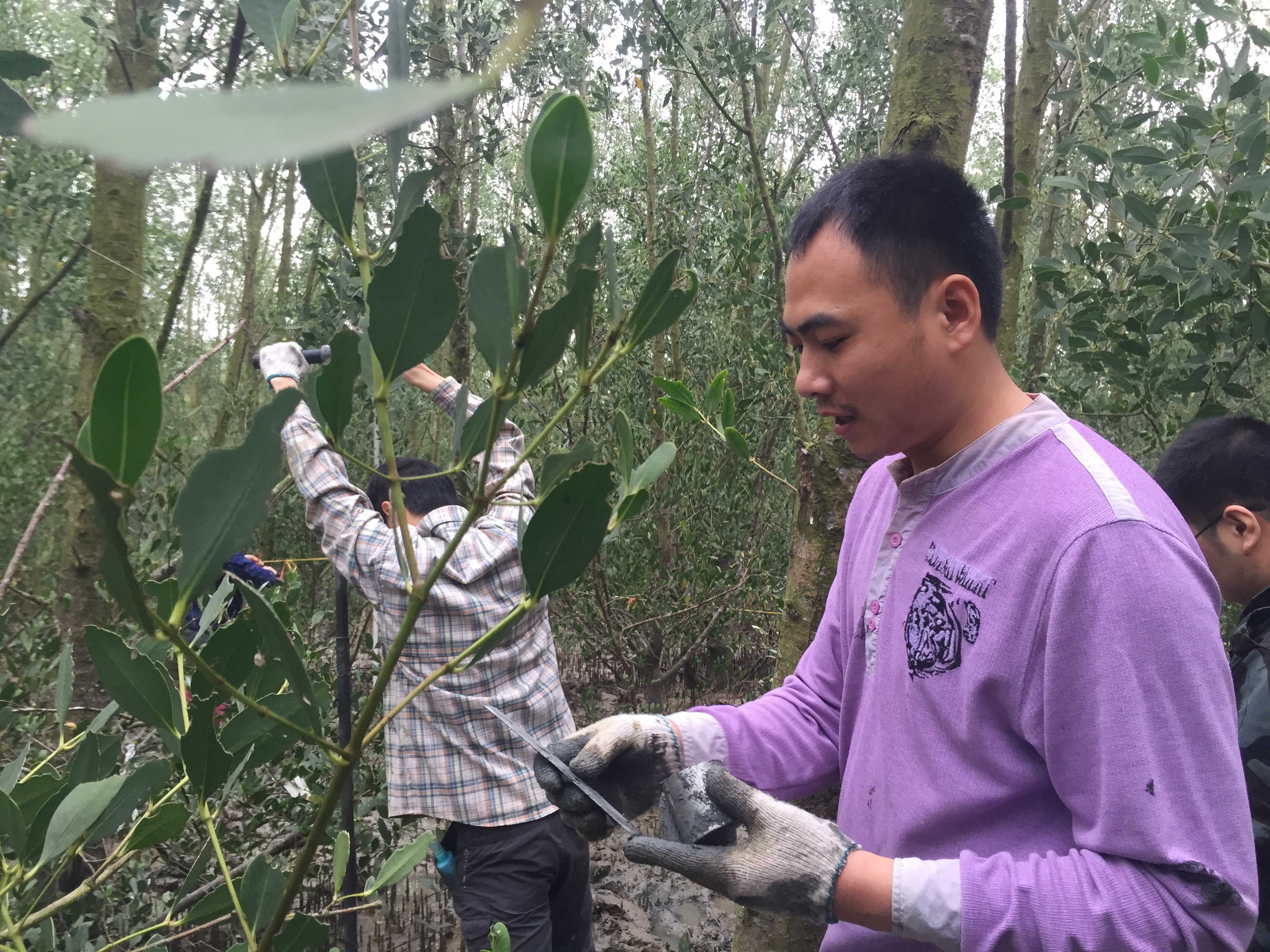Recently, Ph.D. student Xiaowei Cui as the first author published a paper on Agricultural and Forest Meteorology entitled "Stronger ecosystem carbon sequestration potential of mangrove wetlands with respect to terrestrial forests in subtropical China ". Professor Guanghui Lin at the Department of Earth System Science at Tsinghua University is the corresponding author.
Mangrove wetlands and terrestrial forests are considered as important carbon sinks for alleviating climate changes, but the sequestration processes and regulations of climate factors on controlling the variability of carbon fluxes of these ecosystems may differ. In order to compare the different mechanisms of carbon sequestration in mangrove and terrestrial forest ecosystems, we analyzed the ecosystem CO2 flux data measured by eddy covariance (EC) technique from four forests ecosystems in subtropical China: two mangrove wetlands and two terrestrial forests. Our results showed that the mangrove wetlands could sequester much more carbon than the nearby terrestrial forests because of significantly higher gross ecosystem production (GEP) and lower ecosystem respiration (Re) values.
 ?
?
The inter-annual dynamics of the daily values and the relationships of the annual mean values of gross ecosystem production (GEP), ecosystem respiration (Re) and net ecosystem exchange (NEE) among the four sites. (a: the carbon flux dynamics of the two mangrove wetlands; b: the carbon flux dynamics of the two terrestrial forests; c: the GEP vs. Re among the four sites on a yearly scale; d: the analysis of the significant differences).
Moreover, our analysis of the responses of net ecosystem exchange (NEE) to photosynthetically active radiation showed that the mangrove wetlands had lower light compensation point but higher maximum photosynthesis rates than the terrestrial forests. In addition, the relationships between the logarithmic values of soil organic carbon ln (SOC) and δ13C indicated that SOC decomposition rates were lower in mangrove forests than in terrestrial forests, which thus led to lower Re values compared to terrestrial forests.

Agricultural and Forest Meteorology is the top magazine in the field of agricultural and forest science. According to the JCR report, the five-year impact factor is 4.75.
Paper link:https://authors.elsevier.com/c/1W7eucFXJKwnn